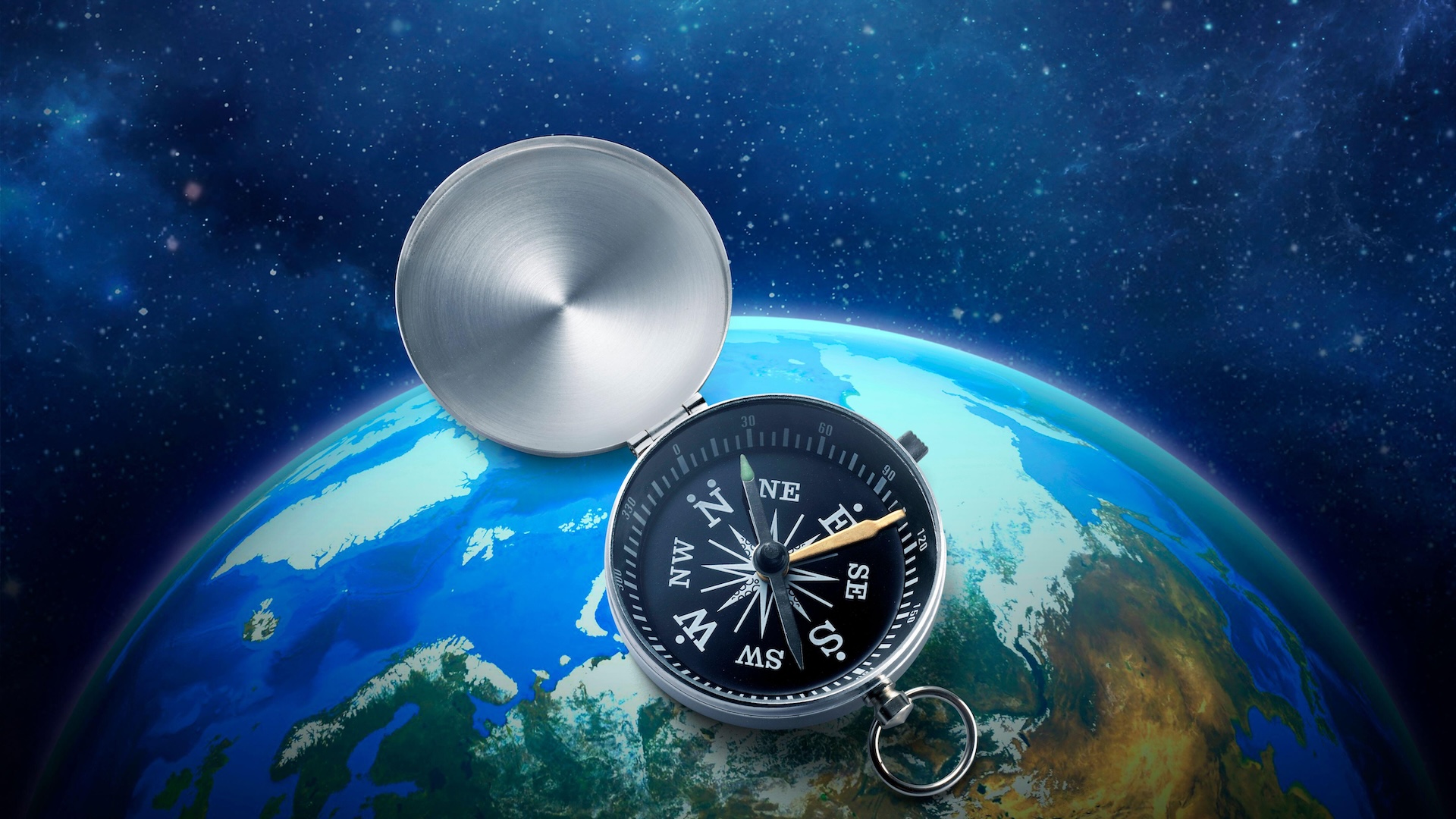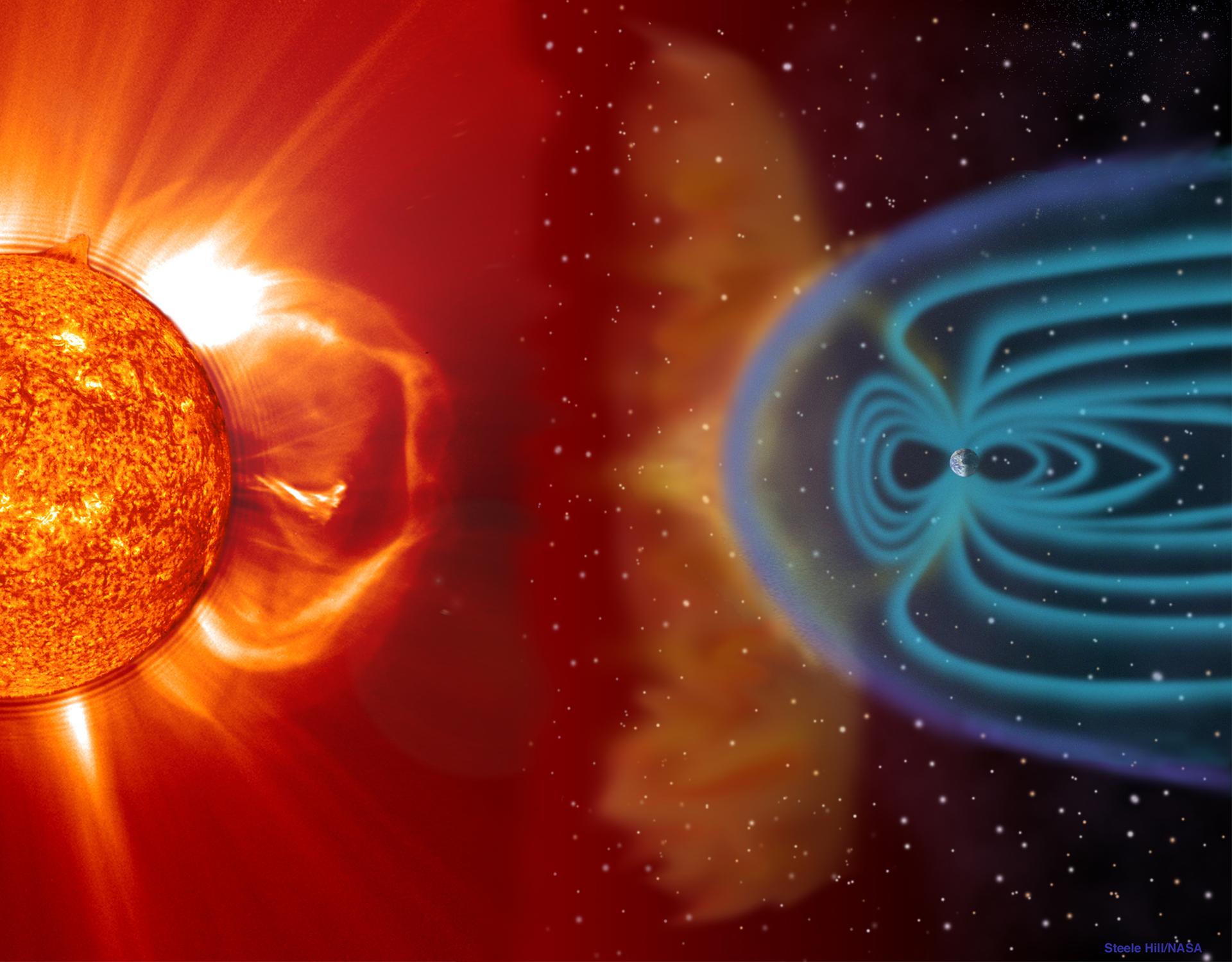
On Earth, a compass can be a vital tool. Compasses have provided a constant point of reference for humans for over 800 years, enabling us to successfully navigate to the far reaches of the planet.
But our species has started to journey farther, into the cold abyss of space. Is the compass still useful outside the bounds of our planet: And if so, where would it point?
"A compass in space is going to measure different things [depending on] where exactly in space you are," Jared Espley, a planetary scientist at NASA Goddard Space Flight Center in Maryland, told Live Science. A compass would still technically work in space, but it wouldn't necessarily point you back to Earth. Instead, it would point to the north pole of whatever magnetic field is the strongest, relative to where in space the compass is located.
A compass on Earth responds to our planet's magnetic field. The compass itself is a magnet, and its north pole naturally aligns with the south pole of our planet's own magnetic field. The magnetic field is generated by electric currents flowing through the molten, metallic core of our planet, which spin into an engine called a geodynamo. Earth is the only rocky planet in the solar system with such a strong magnetic field.
Related: What if Earth's magnetic field disappeared?
This magnetic field bubbles out from the planet about 23,000 miles (37,000 kilometers) on the side that faces the sun and trails at least 230,000 miles (370,000 km) behind the planet, according to NASA. This region around a planet dominated by the planet's magnetic field is known as the magnetosphere.
An astronaut who wanted to use a compass to get back to Earth would likely need to be within this magnetosphere for the compass to register the planet's magnetic field. However, the magnetic field isn't a particularly hard boundary. "Even beyond the classical magnetosphere, where you would say it's the Earth's field that is dominant or noticeable, you can still detect things really far away," Espley said.
Evidence from lunar rocks suggest that the moon once had a magnetic field, but the natural satellite's inner core has since slowed and cooled, causing it to lose its geodynamo. And, like the moon, other celestial bodies in our solar system now lack a strong magnetic field. For example, around 3.9 billion years ago, Mars' geodynamo mysteriously slowed down, dramatically weakening its magnetic field, which eventually resulted in the loss of its atmosphere.
But even without these celestial bodies' planetary magnetic fields intact, an astronaut standing on the moon or Mars would still pick up some magnetic signals. This is the crustal magnetic field, Espley said — rocks on the outer crust that still hold evidence of the planet's old geodynamo.
Of all the planets in the solar system, a compass is most likely to point toward Jupiter. This is because Jupiter's magnetosphere is massive. According to NASA, Jupiter's magnetosphere is the largest structure in the solar system, at 12 million miles (21 million km) wide. This giant magnetosphere is generated by the planet's metallic hydrogen core and is currently being studied by the Juno spacecraft to better understand how magnetic fields are created.
But what if an astronaut isn't within a planet's magnetosphere? Most of space is seemingly empty. But within our solar system, one magnetosphere dwarfs all others: that of the sun.
"If you're in this stereotypical deep space vacuum in between the planets, [a compass] is mostly going to measure what magnetic field is coming from the solar wind," Espley said.

The sun's magnetosphere, known as the heliosphere, spirals out from the star and extends three times farther out than Pluto. This is because the sun's solar wind carries its own faint magnetic field as it blasts out into the solar system, according to the National Magnetic Field Laboratory.
The magnetic field directly on the sun is also rather messy, which can be seen in images of the sun's coronal loops. These arches of plasma follow the sun's magnetic field lines, which grow larger and more complex as the sun reaches its solar maximum, the peak period in its activity. It's so complex that the true north and south of the star begin to get a little bit blurry, and eventually swap places, according to Space.com.
Ultimately, a traditional compass that relies on an "up" and "down" to calibrate it would be rather pointless in space as a navigational tool. There are a few commercially available "3D" compasses that could theoretically point you toward magnetic north in space. However, they still wouldn't necessarily point you back to Earth — only to whichever magnetic field is closest.
However, highly powerful compasses called magnetometers are useful in space, just not for navigation. NASA uses these instruments to understand more about plasma interactions in space and to pick up ancient signs of geodynamos that died billions of years ago. "Measuring the magnetic field is super useful for understanding what is going on inside of a planet," Espley said.







